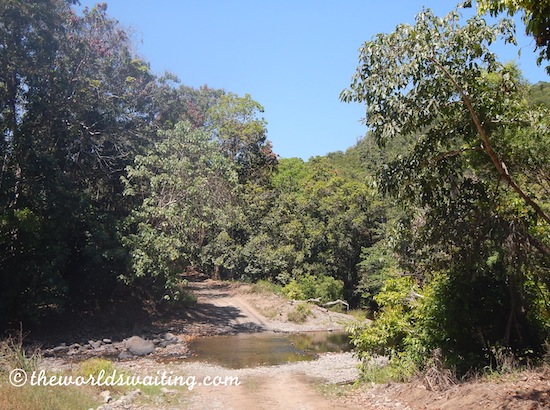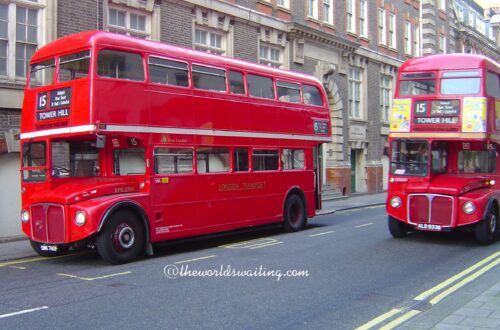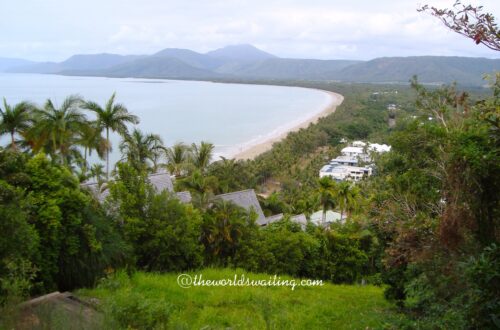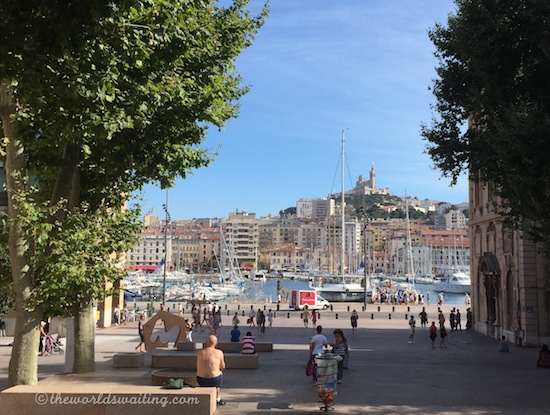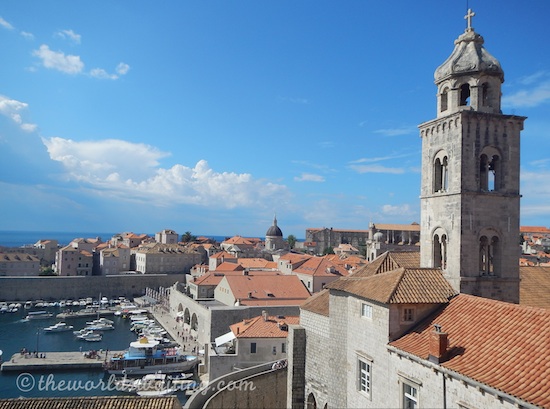
10 Best things to do in Dubrovnik
It is no wonder Game of Thrones was filmed in Dubrovnik; the ancient walled city is one of impressive historic beauty, and certainly seems borrowed from another world. Dubrovnik, also known as the ‘Pearl of the Adriatic’, sits in splendour on the southern Croatian coastline. It is best known for its UNESCO World Heritage Site listed old town, surrounded by formidable stone walls. As playwright George Bernard Shaw said during a visit in the 1920s, “Those who seek paradise on earth should come to Dubrovnik”
There are many things to do in and around the old town of Dubrovnik. Due to the proximity of everything, visitors could easily see a lot during a long weekend, but Dubrovnik could also provide ample distraction to warrant a longer visit. Here are my favourite things to do in Dubrovnik.
Walk the Dubrovnik city walls
As such a recognisable feature of Dubrovnik, the opportunity to climb the walls that are centuries old, and enjoy the magnificent and sometime intimate views across the old town is one not to be missed. Walkers are rewarded with birds’ eye views out to sea, across the terracotta coloured roof tiles, and into life on the streets beneath. The walls to the city stand 24 metres high and the walls facing the sea are 3 metres thick, while those on the land-side are 6 metres thick. They feature two main gates, Pile (in the west) and Ploce (in the east), and it is at these points that you can enter the walk. It is obvious to start with the walk along the top of the walls for visitors that are short of time, but it is also a great way to familiarise yourself with the old town, which can seem maze-like in places. The full circuit stretches for about 2 kilometres.
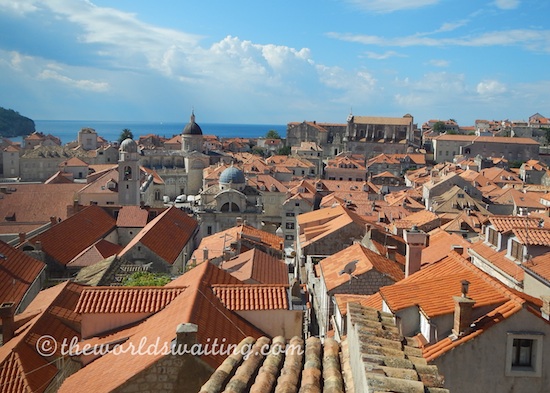
Stroll on Dubrovnik’s main street – Stradun
Stradun is the main thoroughfare through the old town. It runs from east to west, connecting the two city gates. The white limestone paving on this wide avenue dates to 1468 and, following centuries of footfall, is highly polished (and can be slippery when it rains). Constructed after an earthquake in 1667, the buildings on either side of Stradun house boutiques, art galleries, cafes and restaurants, and on higher levels residences and visitor accommodation. The Onophrio Fountain sits at the eastern end of Stradun. Dating back to the 1400s, the impressive polygonal cistern was once Dubrovnik’s lifeline, bringing water into the city. Visitors strolling along Stradun, gelato in hand, walk towards the bell tower that towers over Luzo Square. The 31 metre tall tower dominates the Dubrovnik skyline and offers great views to those that climb it. Special features include the clock face with bronze showing the phase of the moon, and two bronze figures that strike the clock tower bell each day at noon.
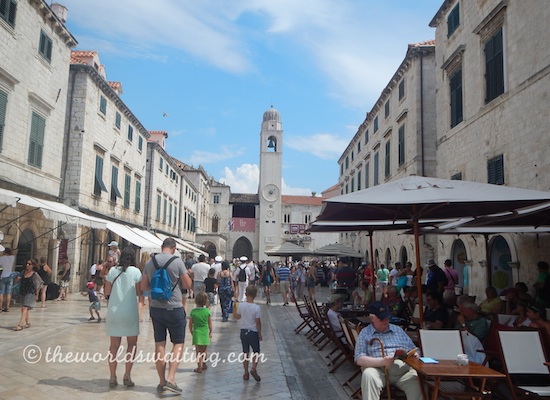
Dubrovnik Cable Car up Mount Srd
Mount Srd stands proud behind Dubrovnik and, at over 400 metres in height, offers incredible views over Dubrovnik and across the Adriatic, as well as across the hilltops inland. While it is possible to walk up the weaving footpath, many visitors enjoy the far easier, and fairly smooth, three-minute cable car journey. A restaurant at the summit provides a comforting breeze and is an excellent spot for lunch or a simple snack as you take in the view. A little further along the hillside there is also a monument to the soldiers who fell during the siege of Dubrovnik. The Museum of the Croatian war of independence is also on the hilltop, housed in the old barracks, offering a unique insight into the conflict in the 1990s.

War Photo Limited exhibition
Wandering around Dubrovnik’s old town these days, it seems incredible that the city was under siege only 20 years ago. A stark reminder is provided in the War Photo Limited gallery, which houses an excellent exhibition of photographs showing images of what life was like during the conflict, as well as temporary exhibitions from war zones around the world. The gallery is well laid out and also features background information into the local conflict. It is challenging, emotionally, but well worth a visit.
Memorial Room of the defenders of Dubrovnik
Housed in a small room off the atrium of the Sponza Palace, the memorial room of the defenders of Dubrovnik holds a collection of photographs of the soldiers that died defending the city, as well as photographs of the city taken during the conflict and artefacts. The use of portrait photos of the individuals lost is very moving. The room is small and it will be difficult to see anything at all if your visit coincides with a tour group.

Rector’s Palace
An impressive building of gothic arches and decorated columns, the one-time home of the rector that governed Dubrovnik, and gothic style Rector’s Palace dates to the 15th century, and also features renaissance and baroque elements. The building is now home to the Cultural History Museum and exhibits interesting artefacts that show what life was like through Dubrovnik’s history, in artfully restored rooms. There is also a collection of clocks stopped at 5.45, which is the time Napoleon’s men took the city on January 31, 1806, marking the fall of the Republic of Ragusa. A bust of wealthy merchant Miho Pracat (1528-1607) who left wealth to the republic for charitable purposes when he died stands in the courtyard.
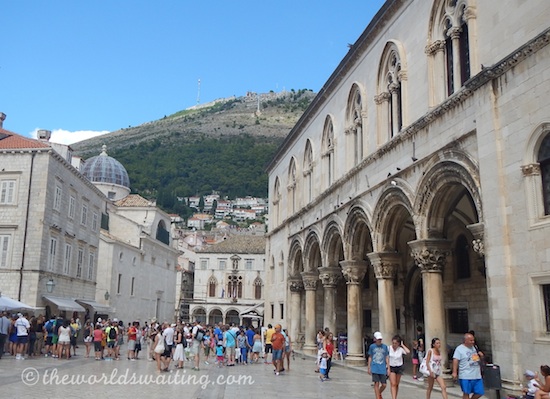
Franciscan Monastery
Founded in 1318, Dubrovnik’s Franciscan Monastery is the oldest monastery of its kind in Europe. While plain from the outside, the building features a cloister of roman arches supported by double columns from which gargoyle faces grimace at passersby. The monastery features a small museum of medieval laboratory equipment and medical books used in the monastery’s pharmacy. There is an internal garden of Mediterranean plants and fruit trees that can be glimpsed from above on the city walls.
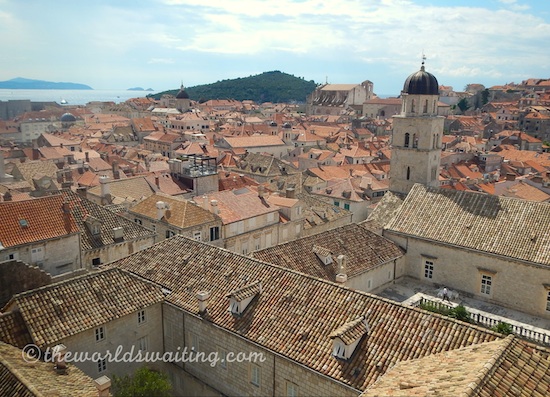
Old Pharmacy Museum
Incredibly still operating as a pharmacy today, the medieval monastery pharmacy is one of the oldest chemists in Europe, giving it the feel of being a living museum. Interesting displays include some historic and grim medical instruments, as well as pots and bottles from the 15th century. A visit will leave you wondering what the locals used to this historic pharmacy must think of modern pharmacies.
Dine alfresco by Dubrovnik harbour
The old town harbour is a working harbour and is busy during the day with fishermen and daytrip passengers. However, it is especially lively at lunch time and in the evenings as the busy restaurants and cafes along the quay serve hungry diners spectacularly fresh seafood. Dubrovnik Old Town Harbour, Croatia
Sunset drinks
While sunset drinks overlooking Dubrovnik from the top of Mount Srd are nice, it involves a significant trip home. An easier place to enjoy a drink as the sun sets over the Adriatic is, the aptly named, Buza Bar, which clings to the rocks on the outside of the old town walls on the southern sea-facing side of the city. It is tricky to find, involving a tunnel through the city wall, but the sunset view makes it worthwhile.
Dubrovnik has become a popular destination in recent years and regular international flights make it easy to get to. The airport is 20 kilometres south east of Dubrovnik old town. Regular (but busy) shuttle buses run to and from the airport and taxis are also available.
Have you visited Dubrovnik? What would you add to this list?
